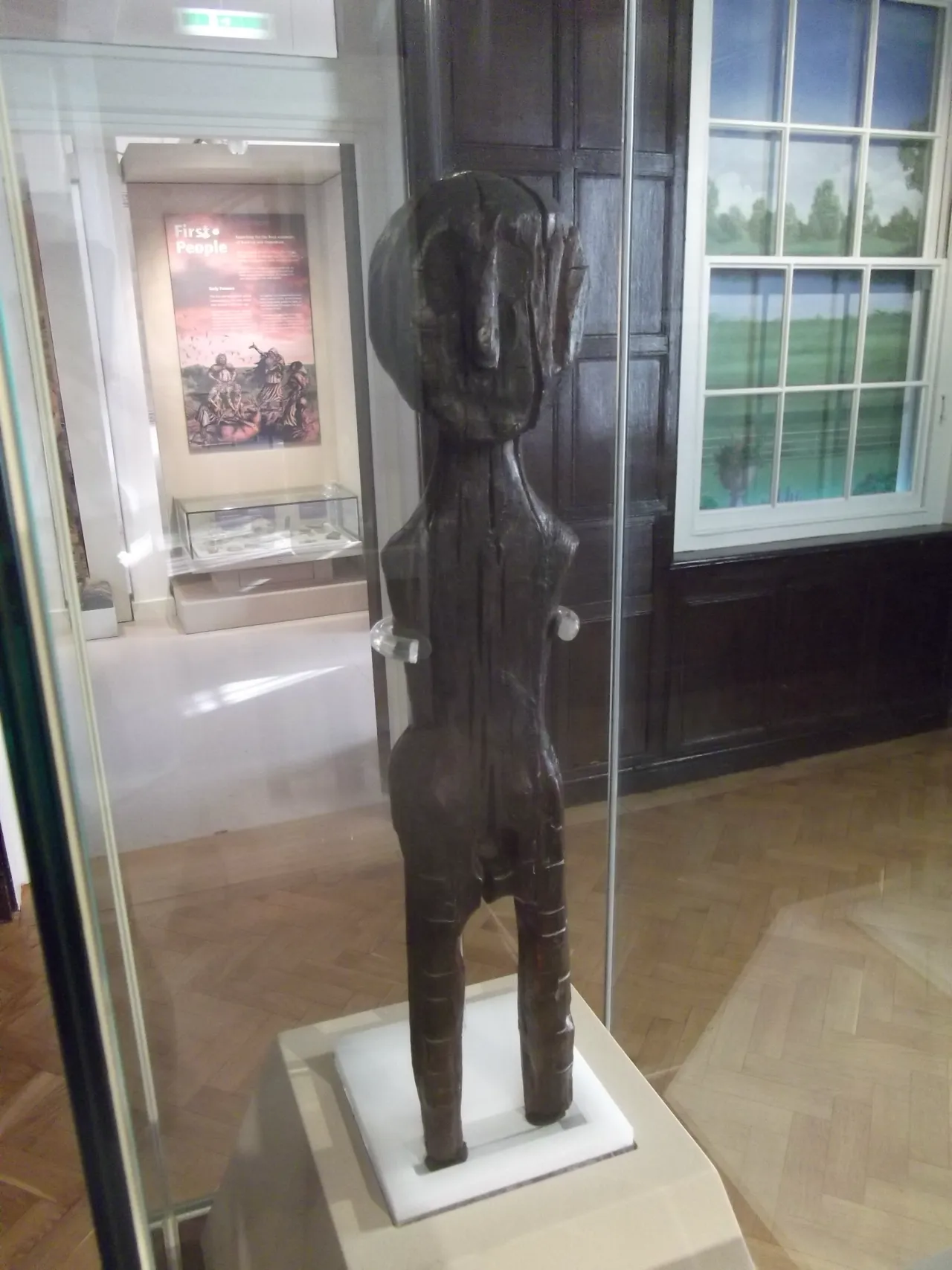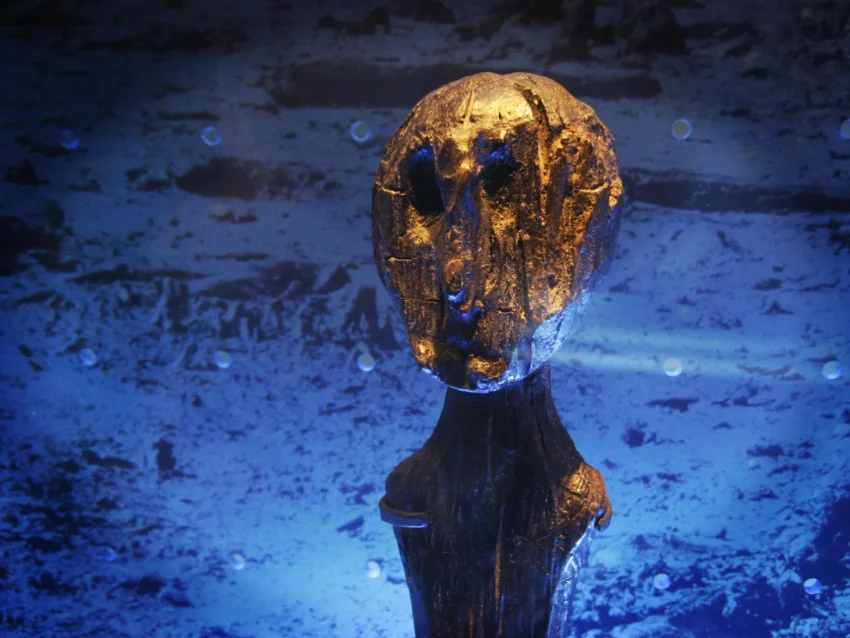The Dagenham Idol: A Window into Prehistoric England
The Dagenham Idol is a remarkable prehistoric statue discovered in 1922 by workers digging sewer pipes in Dagenham, East London. Dating back to around 2250 BC, this wooden figure represents one of the oldest human depictions ever found in England.
Get your dose of History via Email

Description and Significance
Carved from Scots pine, the 46-centimeter statue depicts a human figure with distinct legs but no arms. The body tapers from the hips and buttocks to a waist and then widens at the shoulders. The head is rounded, and faint markings are visible across both legs. Notably, the figure has a hole in the pubic area. While the purpose of this hole remains unclear, some archaeologists speculate it may have held a now-lost element, potentially indicating gender.

Archaeological Context and Interpretation
The idol was found buried in peat, roughly 3 meters underground, near the remains of a deer skeleton. This positioning has led some researchers to believe it may have been a votive offering connected to fertility practices. The damage to the left eye is interesting, but there’s no evidence to link it to specific myths or cultures from much later periods.
Current Location and Legacy
The original Dagenham Idol resides at the Colchester Castle Museum, though it’s currently on indefinite loan to the Valence House Museum in Dagenham. Additionally, a replica is on display at the Museum of London.
The Dagenham Idol remains a significant archaeological find. It offers valuable insights into the possible religious or cultural practices of the people who created it. Its preservation and display continue to contribute to our understanding of prehistoric England.
Sources:


